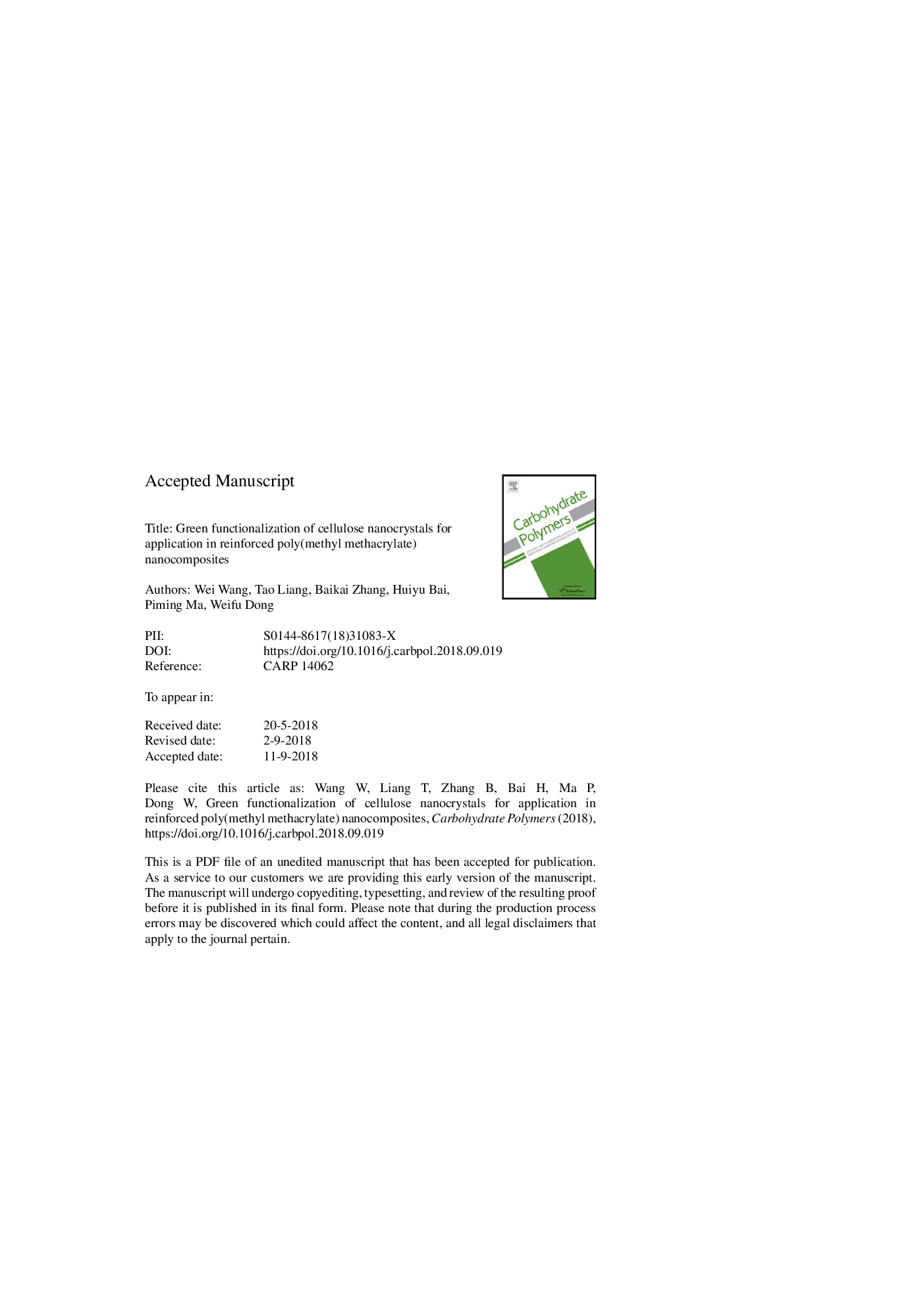| Article ID | Journal | Published Year | Pages | File Type |
|---|---|---|---|---|
| 10141197 | Carbohydrate Polymers | 2018 | 20 Pages |
Abstract
Cellulose nanocrystals (CNC) were carboxylated through an organic solvent free esterification method using l-malic acid (MA) to improve performance of transparent poly(methyl methacrylate) (PMMA) nanocomposites. A series of CNC carboxylated with a degree-of-substitution (DS) of 0, 0.035, and 0.20 were obtained. The presence of grafted carboxyl groups was characterized by Fourier transform infrared (FT-IR) spectroscopy and 13C NMR analysis, meanwhile effects of content and DS of CNC on the structure, thermal, mechanical, and optical transparency properties of the nanocomposites were assessed. The results indicated that the homogeneous dispersion of CNC and a favorable PMMA-CNC interface were necessary to enhance the properties of nanocomposites. Facilitated through hydrogen bonding interactions, the resulting films demonstrated that a low percentage loading of CNC with high DS worked as effective reinforcing agents, producing stronger and tougher films than neat PMMA films, with an improved thermal stability and retention of good transparency.
Keywords
Related Topics
Physical Sciences and Engineering
Chemistry
Organic Chemistry
Authors
Wei Wang, Tao Liang, Baikai Zhang, Huiyu Bai, Piming Ma, Weifu Dong,
